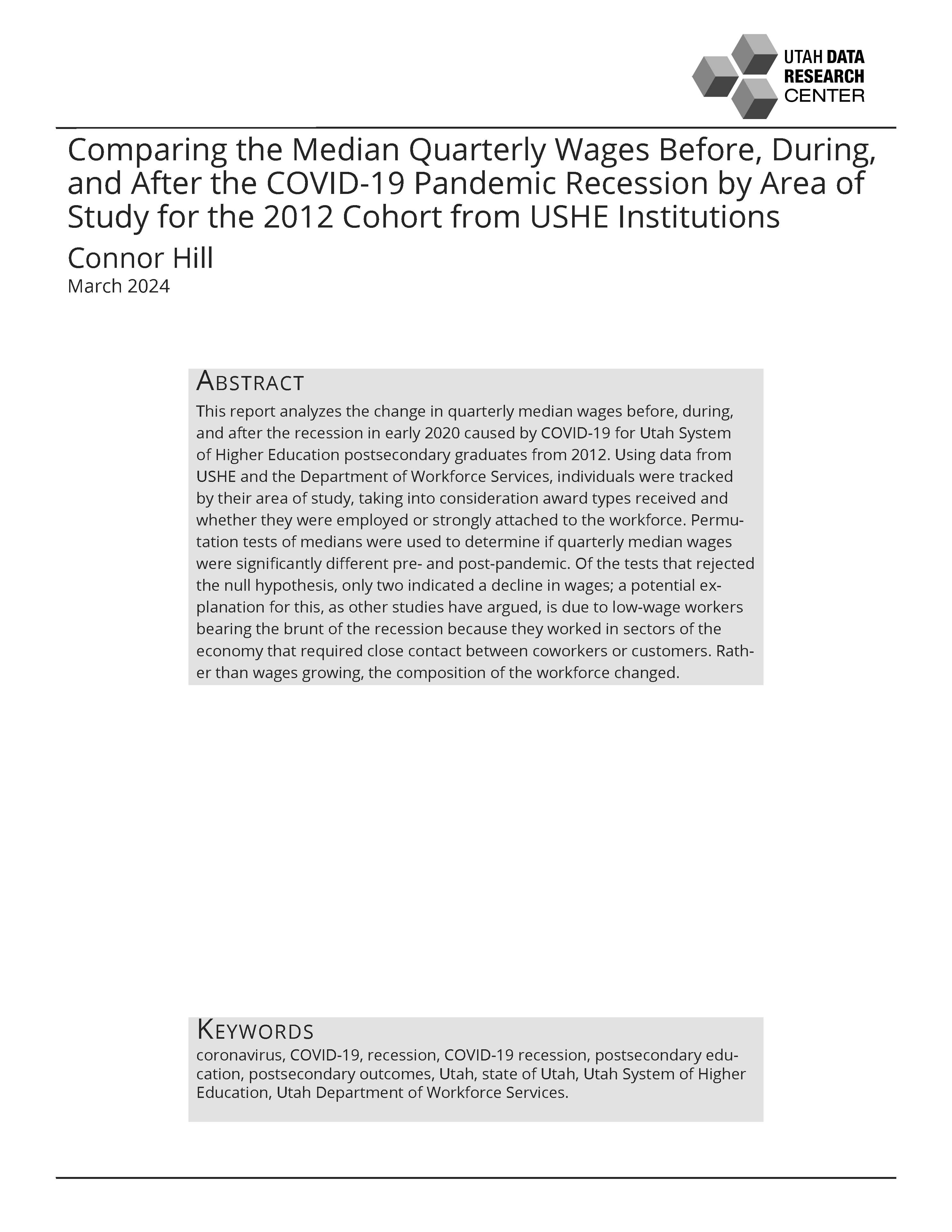Overview
This study analyzes the impact of the COVID-19 pandemic recession on employment rates in Utah’s labor force and the median quarterly wages for the top areas of study for postsecondary graduates in Utah. Combining data from the Utah System of Higher Education (USHE) and the Department of Workforce Services (DWS), we examined how these variables of interest changed before, during, and after the COVID-19-induced economic recession in 2020.
Researchers examining the impact of the recession caused by the coronavirus, lasting from March-April 2020, have found that one of the main indicators of whether employees lost their jobs was their educational attainment. Individuals with higher educational attainment were less likely to lose their positions due to working in sectors of the economy that were capable of transitioning to remote work (Mongey et al., 2020; Montenovo, et al., 2021). In comparison, those with only a high school diploma were more susceptible to job loss because of their greater likelihood to work in industries such as leisure and hospitality or retail trade – sectors that require close contact with employees and customers.
20,460 individuals are included in this study. 16,609 are USHE graduates with awards ranging from certificates to graduate degrees; the remaining 3,851 are individuals that were enrolled in a USHE institution in 2012 and have not yet received a postsecondary award from USHE institutions. Each of these individuals’ workforce histories in Utah were analyzed, and individuals were classified as “strongly attached” to the workforce or not. Individuals who were strongly attached to the workforce earned $3,770 or more in all four quarters within a given annum, or the expected earnings of an individual working 40 hours per week for the federal minimum wage.


